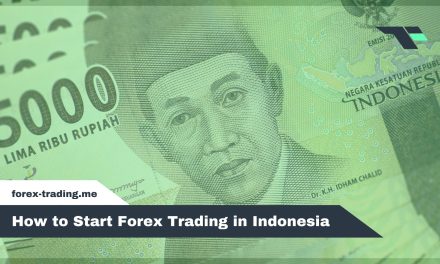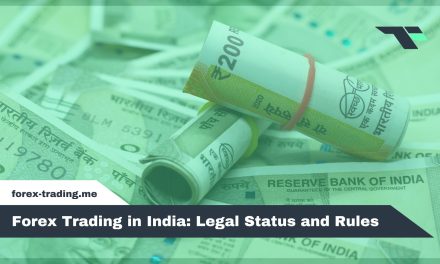
Forex Trading in India: Legal Status and Rules

Forex trading in India is legal under the Foreign Exchange Management Act (FEMA), with the Reserve Bank of India and Securities and Exchange Board of India providing regulatory oversight. Retail traders can only trade through SEBI-registered exchanges like NSE and BSE, limited to 12 approved currency pairs including USD/INR and EUR/INR. Trading requires an Online Derivative Link account with a registered broker, KYC documentation, and approximately ₹50,000 initial margin. Understanding these regulations guarantees compliant participation in India’s growing forex market.
Table of Contents
What Is Forex Trading in India?
Forex trading in India refers to the buying and selling of currencies within the framework established by the Reserve Bank of India and Securities and Exchange Board of India, where participants exchange one currency for another to profit from fluctuations in exchange rates. The Indian forex market has experienced substantial growth, with USD/INR trading volumes increasing approximately 35% year-over-year in 2024, reflecting heightened retail participation and institutional activity. This currency exchange market operates through authorized dealers and recognized exchanges, allowing traders to engage in spot transactions and approved currency derivatives while adhering to regulatory guidelines that distinguish legal trading from prohibited speculative activities.
Definition of the currency exchange market
The currency exchange market operates as a decentralized global network where participants buy and sell currencies against one another, making it the world’s largest financial market by trading volume. This market encompasses several distinct segments, including the spot market where currencies are exchanged for immediate delivery, and the derivatives market featuring forwards, futures, and options contracts.
The interbank market forms the core infrastructure, where major financial institutions trade directly with each other, establishing exchange rates for currency pairs like USD/INR or EUR/USD. Spot foreign exchange transactions account for approximately 30% of global turnover, while forwards and swaps represent roughly 49% of all trading activity. These instruments allow participants to hedge currency risks, speculate on price movements, and facilitate international commerce across borders.
Recent growth in retail trading volumes
Across India’s financial landscape, retail participation in currency trading has experienced remarkable expansion, with individual trading volumes surging 35% year-over-year in 2024. This growth reflects broader financial market democratization as technology platforms make currency trading increasingly accessible to everyday investors.
Several factors contribute to this dramatic increase in retail engagement:
- Enhanced digital trading platforms offering user-friendly interfaces and mobile accessibility
- Growing financial literacy among middle-class investors seeking portfolio diversification
- Reduced minimum investment requirements making entry barriers more manageable
- Increased awareness of currency markets through educational resources and media coverage
- Rising disposable income enabling greater participation in financial markets
The National Stock Exchange reported a 25% increase in active retail accounts, demonstrating sustained interest rather than temporary speculation. This expansion indicates India’s evolving investment culture.
Below is a concise breakdown to help you quickly grasp the essential facets of India’s forex market, its structure, growth drivers and key figures—all in one glance.
| Aspect | Details | Notable Figures | Implications |
|---|---|---|---|
| Market Definition | Decentralized network for buying/selling currencies under RBI & SEBI guidelines | $7.5 trillion global daily volume | Positions India within the world’s most liquid market |
| Core Segments | • Spot market for immediate delivery• Derivatives (forwards, futures, options)• Interbank trading among major institutions | Spot 30% of global turnoverDerivatives 49% | Offers both hedging and speculative opportunities |
| Authorized Channels | • RBI‐approved dealers• Recognized exchanges (NSE, BSE, MSEI) | 12 currency derivative pairs | Ensures compliance and investor protection |
| 2024 Retail Growth | Surge in individual participation driven by digital platforms and financial literacy | 35% YoY increase in USD/INR volume25% more active retail accounts | Indicates lasting democratization of currency trading in India |
| Growth Enablers | • User-friendly mobile apps• Lower entry barriers• Educational resources | Minimum trades from ₹1,000 | Broadens access for new and seasoned investors alike |
| Regulatory Safeguards | Compliance under FEMA 1999, RBI circulars, and SEBI margin rules | Margin requirements 15–50% | Balances market integrity with risk management |
Is Forex Trading Legal in India?
The legality of forex trading in India operates within a strictly regulated framework established by multiple regulatory authorities, each governing different aspects of currency transactions. The Reserve Bank of India serves as the primary regulator under the Foreign Exchange Management Act (FEMA) of 1999, setting clear boundaries between permissible domestic currency trading and prohibited offshore speculation. The Securities and Exchange Board of India provides additional oversight for exchange-traded currency derivatives, implementing specific compliance requirements including margin stipulations and position limits for institutional and retail participants.
Regulatory framework by the Reserve Bank of India
When examining foreign exchange regulations in India, the Reserve Bank of India serves as the primary authority governing all currency trading activities under the Foreign Exchange Management Act (FEMA). The RBI establishes thorough guidelines that determine permissible forex activities while maintaining strict oversight of market participants.
The regulatory framework encompasses several key components:
- Authorized Persons licensing – Banks and financial institutions must obtain RBI authorization to conduct forex business
- Exposure limits enforcement – Individual trading positions are subject to prescribed maximum thresholds
- Onshore trading permissions – Currency futures trading is permitted exclusively on recognized domestic exchanges
- Offshore derivative restrictions – International forex instruments are capped at USD 10 million per client annually
- FEMA compliance monitoring – All forex transactions require adherence to foreign exchange management regulations
These regulations promote market stability while protecting retail investors from excessive risk exposure.
Oversight and compliance requirements from SEBI
Several regulatory mechanisms guarantee that currency derivative trading operates under strict surveillance through the Securities and Exchange Board of India, which maintains extensive oversight of all exchange-traded forex instruments and broker activities. SEBI mandates specific investor protection protocols, including client-segregated margin requirements that prevent brokers from misusing customer funds. These segregated accounts assure traders’ deposits remain separate from brokerage operational capital, reducing counterparty risk considerably.
The regulatory framework establishes minimum net worth requirements of ₹50 million for authorized forex brokers, creating financial stability standards that protect market participants. SEBI’s compliance checks extend to regular audits of broker operations, margin adequacy assessments, and monitoring of trading patterns to detect potential market manipulation. These thorough oversight measures create a controlled environment where retail and institutional participants can engage in currency derivative trading with enhanced security and regulatory backing.
Dive straight into India’s forex rulebook—this snapshot shows each regulator’s mandate, top rules, thresholds, and exactly what they mean for your trading.
| Regulatory Authority | Scope | Key Provisions | Limits & Requirements | Trader Impact |
|---|---|---|---|---|
| Reserve Bank of India (RBI) | All onshore FX under FEMA | Licensing of Authorized Persons; Permission for currency futures | Offshore derivatives capped at USD 10 M/client; Position limits enforced | Only RBI-approved entities can operate; curbs speculative excess |
| Legal Framework (FEMA 1999) | Cross-border currency flows | Defines permissible transactions; Enforces compliance | All FX deals must adhere to FEMA guidelines | Ensures market stability and alignment with national policy |
| SEBI (Securities & Exchange Board of India) | Exchange-traded currency derivatives | Client-segregated margin accounts; Regular broker audits | Margin requirements 15–50%; Broker net worth ≥ ₹50 M | Protects client funds; deters manipulation; upholds integrity |
Key Rules for Forex Trading in India
India’s forex trading landscape operates within a structured regulatory framework that defines specific trading instruments and approved market channels. The Reserve Bank of India and Securities and Exchange Board of India have established clear parameters regarding which currency derivatives can be legally traded, limiting retail participants to 12 approved currency pairs available on designated exchanges. Traders must also work exclusively through authorized brokers who maintain proper licensing from Indian regulatory bodies to guarantee compliance with domestic financial laws.
Permissible currency derivatives
Although forex trading faces strict regulations in India, the Securities and Exchange Board of India (SEBI) and the Reserve Bank of India (RBI) permit specific currency derivative instruments through recognized exchanges.
These approved derivative products include:
- USD/INR futures contracts – standardized agreements for rupee-dollar exchange at predetermined rates
- EUR/INR futures and options – European market exposure through regulated instruments
- GBP/INR and JPY/INR derivatives – British pound and Japanese yen paired with rupees
- Currency forwards – customized contracts for hedging foreign exchange risk
- Cross-currency options – providing flexibility in currency exposure management
USD/INR and EUR/INR futures generate average daily volumes of ₹150 billion, demonstrating substantial market participation. Traders must operate exclusively through SEBI-registered exchanges like NSE and BSE, ensuring transparent price discovery and regulatory oversight while maintaining compliance with established trading parameters.
Authorized online brokers
Legal forex trading in India requires participants to work exclusively with brokers possessing proper authorization from both SEBI and recognized exchanges. The Reserve Bank of India has approved five major brokers that meet these stringent requirements: HDFC Securities, ICICI Direct, Kotak Securities, Zerodha, and Angel Broking. These entities maintain exchange membership and proper licensing credentials, guaranteeing compliance with Indian regulatory standards.
Traders must verify broker authorization before opening accounts, as unauthorized platforms operate illegally and expose participants to significant risks. RBI-approved brokers provide access to permissible currency derivatives while maintaining regulatory oversight and investor protection measures. Exchange membership ensures brokers adhere to capital adequacy norms, reporting requirements, and operational standards. Selecting authorized brokers protects traders from fraudulent schemes while guaranteeing access to legitimate forex trading opportunities within India’s regulated framework.
Navigate India’s tightly defined forex arena with clarity—this snapshot lays out every legal instrument, trading venue, and broker you need to know, plus the vital stats that prove why these rules matter.
| Rule Category | What’s Allowed | Key Figures | Why It Matters |
|---|---|---|---|
| Currency Derivatives | USD/INR, EUR/INR, GBP/INR, JPY/INR futures & options; customized forwards; cross-currency options | ₹150 billion average daily volume for top pairs | Ensures market depth and fair pricing |
| Approved Trading Venues | Only SEBI-registered exchanges (NSE, BSE, MSEI) | 12 currency pairs listed | Guarantees transparent trading and regulatory oversight |
| Authorized Brokers | HDFC Securities, ICICI Direct, Kotak Securities, Zerodha, Angel Broking | 5 RBI-approved entities | Shields you from unauthorized platforms and fraud |
| Licensing & Compliance | Brokers must hold SEBI and RBI licenses; meet capital adequacy and reporting norms | Minimum net worth ₹50 million | Upholds market stability and protects client funds |
| Risk Management Instruments | Only sanctioned derivatives and forwards for hedging or speculation | N/A | Provides legal tools to manage exposure and seize opportunities |
How to Start Forex Trading Legally
Starting forex trading legally in India requires opening an Online Derivative Link (ODL) account with a SEBI-registered broker, as this specialized account type enables currency derivative transactions on recognized exchanges. The account opening process involves completing thorough Know Your Customer (KYC) documentation, including identity proof, address verification, income statements, and bank account details to guarantee regulatory compliance. Most brokers complete the verification and account activation within 3-5 business days, requiring an initial margin deposit of approximately ₹50,000 to begin trading operations.
Opening an ODL trading account
How does one establish the proper account structure to trade currency derivatives within India’s regulatory framework? Traders must open an Over-the-Counter Derivatives (ODL) account through RBI-authorized brokers to participate legally in currency trading. This specialized account differs from standard trading accounts and requires specific documentation to comply with regulatory requirements.
The ODL account opening process involves several critical steps:
- Submit KYC documents including PAN card, Aadhaar, and bank statements
- Complete the ODL-specific application forms mandated by RBI regulations
- Provide proof of income and trading experience documentation
- Sign risk disclosure statements acknowledging currency trading risks
- Deposit initial margin as required by the broker’s collateral policies
RBI mandates that ODL brokers maintain client collateral at 100% of exposure, ensuring adequate risk coverage. This stringent requirement protects both traders and the broader financial system from excessive leverage risks.
KYC and documentation steps
Gathering the required documentation represents the foundation of compliant forex trading in India, as SEBI and RBI regulations mandate thorough identity verification before any currency trading activity can commence. Traders must prepare essential documents including their PAN card, which serves as the primary tax identification proof, and Aadhaar verification for biometric authentication. Additionally, valid proof of address such as utility bills or bank statements must be submitted to establish residential status. The verification process typically completes within 48 hours once all documents are submitted correctly. Banks and authorized dealers scrutinize these documents to guarantee compliance with anti-money laundering regulations and foreign exchange management guidelines, making thorough preparation vital for avoiding delays in account activation and trading authorization.
Ready to dive into India’s forex market? Follow this streamlined roadmap to open your ODL account, complete compliance checks, fund your trades, and start operating within 3–5 days—all while meeting RBI and SEBI standards.
| Step | Description | Key Requirements | Timeframe | Impact |
|---|---|---|---|---|
| Open ODL Account | Apply with an RBI-authorized, SEBI-registered broker | Completed application form; broker credentials verified | Day 1 | Grants access to currency derivatives |
| Submit KYC Documents | Provide identity, address, income, and experience proofs | PAN card; Aadhaar; utility bill or bank statement; income proof | Within 48 hrs | Ensures AML and FEMA compliance |
| Sign Risk Disclosures | Acknowledge market and leverage risks | Broker-provided risk disclosure statement | Concurrent | Confirms trader awareness of FX risks |
| Deposit Initial Margin | Fund account with minimum collateral | Margin deposit ~₹50,000 | Day 3–5 | Secures required collateral for trading |
| Account Activation | Final verification and trading permissions granted | All above steps complete | By Day 5 | Enables live trading under regulatory guardrails |
Taxation and Reporting Requirements
Forex trading profits in India fall under “Income from Other Sources” and face taxation at rates up to 30%, depending on the trader’s income tax slab. The government imposes a 10% Tax Deducted at Source (TDS) on derivative trading gains, requiring traders to account for this deduction when calculating their tax liability. Traders must file their returns using ITR-3 forms by July 31st each year, ensuring compliance with reporting deadlines to avoid penalties from tax authorities.
Income tax on trading profits
The classification of forex trading profits under India’s income tax framework determines the applicable tax rates and greatly impacts a trader’s financial planning strategy. Unlike equity investments, forex trading gains receive no preferential treatment and are taxed as business income rather than capital gains.
Key taxation aspects include:
- Slab rate taxation: Profits taxed according to individual income tax slabs (5%, 20%, or 30%)
- No capital gains benefit: Derivatives trading excludes concessional long-term capital gains rates
- Business income classification: Frequent trading activities categorized as speculative business income
- Surcharge application: Additional surcharge applies on income exceeding ₹50 lakh annually
- Loss carry-forward: Trading losses can offset future speculative gains for four assessment years
This taxation structure requires traders to maintain detailed records and factor tax obligations into their overall profitability calculations.
Reporting deadlines and required forms
Beyond understanding tax liability calculations, forex traders must navigate specific filing requirements and deadlines that differ substantially from standard salary earners or casual investors. Forex traders typically must file ITR-3 (Income Tax Return for individuals and HUFs having income from profits and gains of business or profession), with the standard deadline falling on July 31st of the assessment year following the financial year in question.
Traders generating substantial turnover face additional compliance burdens. Under Section 44AB of the Income Tax Act, those exceeding ₹10 crore in annual turnover must undergo mandatory tax audits by qualified chartered accountants. This audit requirement creates additional reporting obligations and earlier deadlines, as audited returns generally require submission well before the standard July 31st cutoff. Missing these deadlines triggers penalty provisions and potential scrutiny from tax authorities.
Stay ahead of the tax curve and never miss a deadline—this breakdown turns complex forex tax rules into clear steps, so you can optimize profits and stay fully compliant.
| Aspect | What You Need to Know | Impact on Your Returns | Deadline & Forms |
|---|---|---|---|
| Tax Rate Classification | Profits taxed as “Income from Other Sources” at slab rates (5%, 20%, 30%); no concessional capital gains treatment | Plan for up to 30% liability on gains | N/A |
| TDS on Derivative Gains | Automatic 10% Tax Deducted at Source on profits from currency derivatives | Reduces net payouts—factor into cashflow projections | N/A |
| Losses & Carry-Forward | Speculative trading losses offset gains for up to four assessment years | Smooths tax burden across profitable and loss-making years | N/A |
| Annual Filing Requirement | File ITR-3 form reporting business-income classification of forex gains | Avoid penalties and interest for late filing | July 31 each year (ITR-3) |
| Audit Thresholds | Mandatory tax audit under Section 44AB if turnover > ₹10 crore | Requires audited financials and earlier submission | As per audit schedule, before July 31 |
Market Prospects & Risk Management
India’s forex market demonstrates robust expansion potential, with analysts projecting a compound annual growth rate of approximately 8% through 2028, driven by increased retail participation and technological advancement. Corporate entities have recognized the importance of currency risk management, as evidenced by 60% of companies utilizing forward contracts to hedge against exchange rate volatility. These market dynamics create opportunities for both speculative trading and strategic risk mitigation, requiring participants to understand various hedging instruments and exposure management techniques.
Growth forecasts for the Indian forex market
Projections for India’s forex market reveal substantial expansion potential, with industry analysts forecasting annual trading volumes could reach $1 trillion by 2028, representing a dramatic increase from current levels.
Several macroeconomic factors drive this optimistic outlook:
- Economic integration: India’s deepening ties with global markets increase currency exchange demands across trade and investment sectors
- Digital infrastructure: Technological advancement in trading platforms makes forex accessible to broader retail participation
- Regulatory clarity: Clearer guidelines from financial authorities encourage institutional growth and market confidence
- Currency demand: Growing international business relationships require sophisticated hedging and trading strategies
- Demographic advantages: India’s young, tech-savvy population shows increasing interest in financial market participation
This expansion trajectory reflects India’s evolution into a major global financial hub, though traders must navigate existing regulatory frameworks carefully.
Hedging and other risk mitigation strategies
While market expansion creates opportunities, successful forex trading in India requires sophisticated risk management strategies that protect capital against currency volatility and unexpected market movements. Forward contracts serve as the primary hedging instrument, comprising 70% of corporate hedges by enabling traders to lock in exchange rates for future transactions. Option strategies provide structured protection in approximately 20% of cases, offering flexibility to benefit from favorable movements while limiting downside exposure. Dynamic hedging represents an advanced approach that adjusts positions continuously based on market conditions and volatility changes.
These tactical approaches—forwards, options, and dynamic hedging—form the cornerstone of professional currency risk management. Implementing appropriate hedging strategies becomes essential for maintaining portfolio stability and ensuring compliance with regulatory capital requirements in India’s evolving forex landscape.
As India’s forex market gears up for rapid growth, understanding projected volumes alongside essential hedging tools is vital—use this quick guide to spot opportunities and safeguard your positions.
| Focus | Key Insight | Figure | Action Step |
|---|---|---|---|
| Growth Forecasts | Trading volumes set to skyrocket with broad-based drivers | $1 trillion annual volume by 2028; 8 % CAGR | Position for expansion by monitoring volume trends |
| Hedging Strategies | Forwards lead the way while options add targeted flexibility | Forwards 70 % of corporate hedges; options 20 % | Implement a mix of forwards and options for balanced risk cover |
Conclusion
Forex trading in India operates within a strictly regulated framework that permits limited currency pair trading through authorized brokers while prohibiting speculation with international pairs. Traders must comply with RBI guidelines, use only approved platforms, and maintain proper documentation for tax purposes. Success requires understanding regulatory boundaries, implementing robust risk management strategies, and staying updated with evolving compliance requirements to guarantee legal participation in India’s controlled foreign exchange market environment.



















